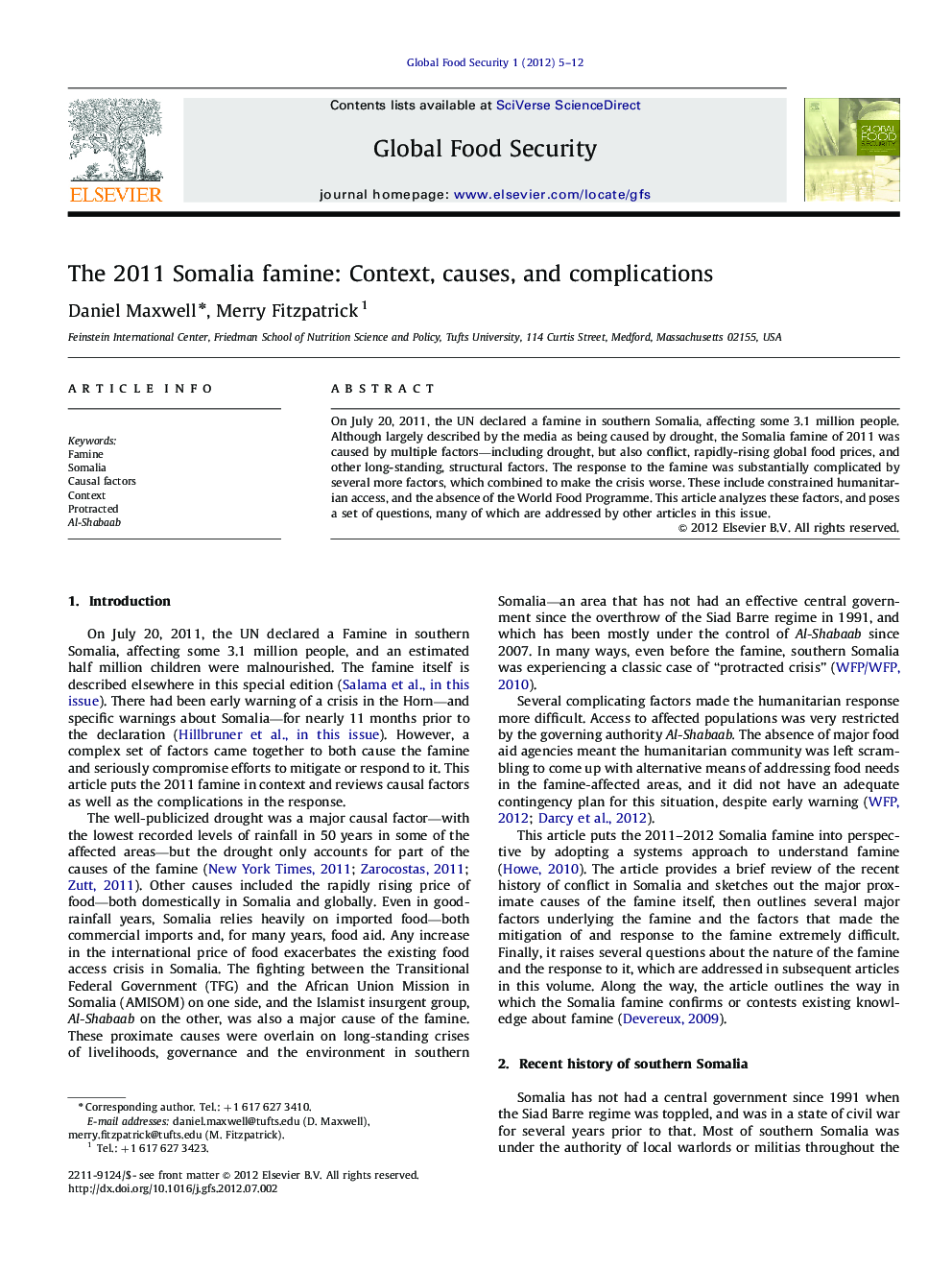| Article ID | Journal | Published Year | Pages | File Type |
|---|---|---|---|---|
| 1047616 | Global Food Security | 2012 | 8 Pages |
On July 20, 2011, the UN declared a famine in southern Somalia, affecting some 3.1 million people. Although largely described by the media as being caused by drought, the Somalia famine of 2011 was caused by multiple factors—including drought, but also conflict, rapidly-rising global food prices, and other long-standing, structural factors. The response to the famine was substantially complicated by several more factors, which combined to make the crisis worse. These include constrained humanitarian access, and the absence of the World Food Programme. This article analyzes these factors, and poses a set of questions, many of which are addressed by other articles in this issue.
► We describe the context in Somalia leading up to the famine. ► Drought, conflict, an underlying livelihoods crisis, and rising food prices were the main causes. ► Control by Al-Shabaab and counter-terrorism laws were major complicating factors. ► Absence of major food aid agencies further complicated the response. ► The famine was due to the confluence of all these causes and factors.
